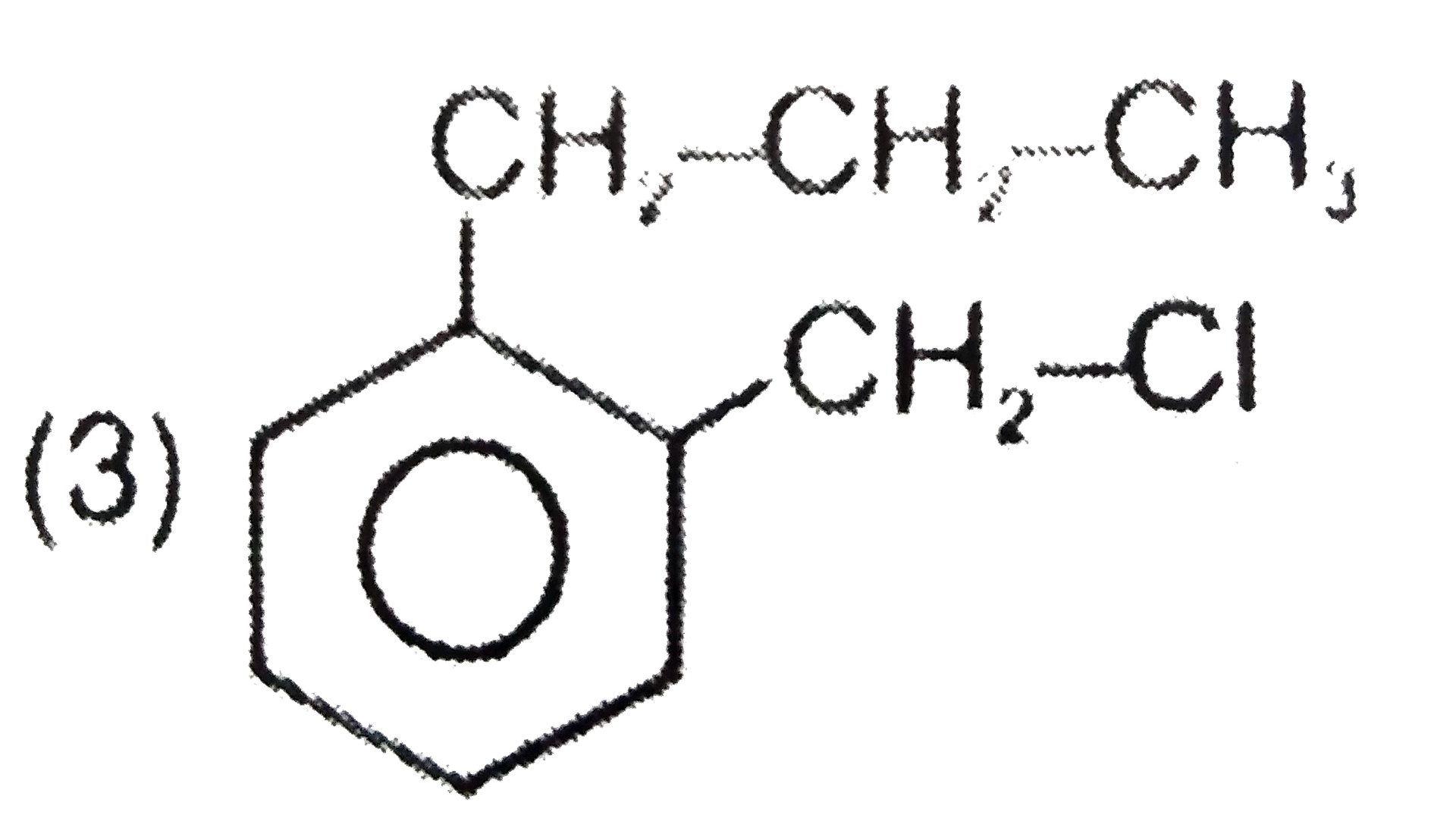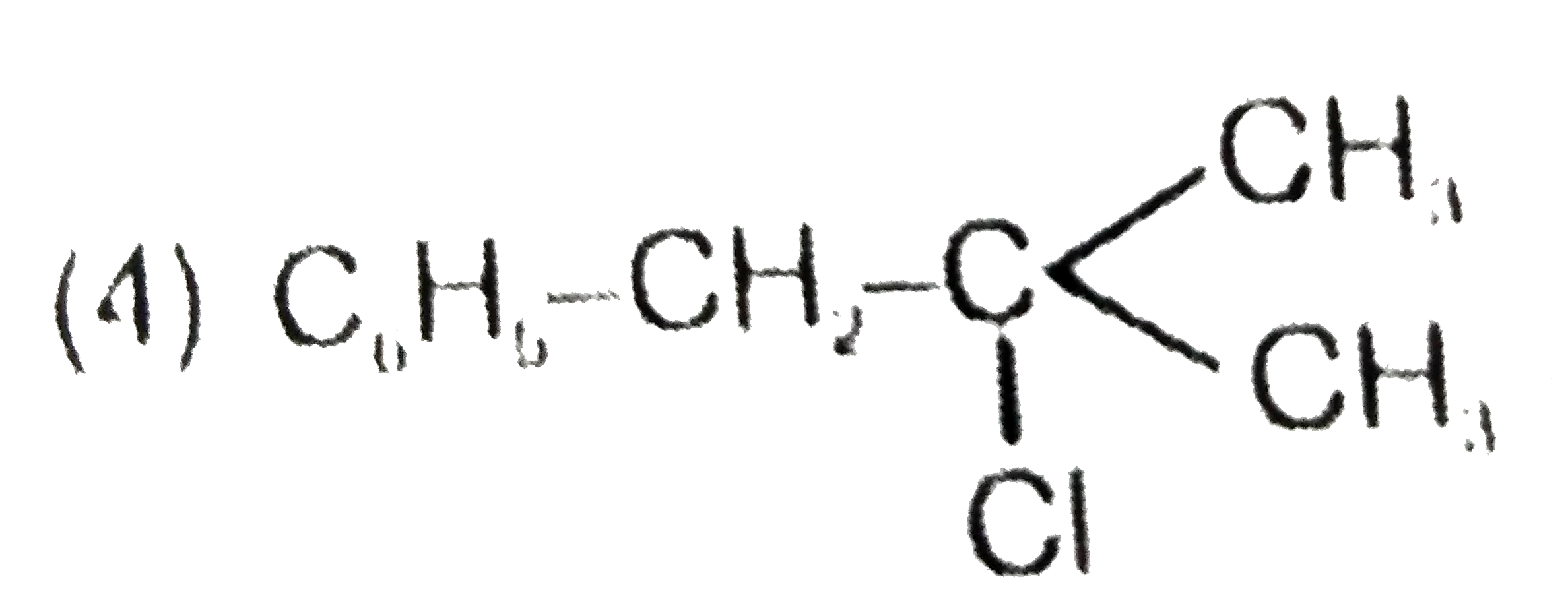An organic compounds A of a molecular formula C6H6 Which is simple aromatic hydrocarbon. A react with Cl2 in pressure of FeCl3 to give B. B reacts with NaOH at 350∘C and 300 atm pressure to give C. B again reacts with ammonia at 250∘C and 50 atm pressure to give D. Identify A,B,C and D explain the reaction.
1. C6H6+Cl2BenzeneFeCl3−−−→C6H5Cl+HClChlorobenzene(B) .
C6H5Cl+NaOH350∘C−−−→300atmC6H5OH+NaClPhenol(C)
C6H5Cl+2NH3550∘C−−−→50atmC6H5NH2Aniline(D)+NH4Cl

Topper's Solved these Questions
Similar Questions
An organic compound (A) with molecular formula C6H6O gives a characteristic colour with aqueous FeCl3 solution. When (A) is treated with CO2 and NaoH at 410 K under pressure, it gives compound (B) which upon acidification gives compound (C). compound (C) reacts with acetyl chloride to give (D) which is a popular pain killer. deduce the structure of (A), (B), (C) and (D) and explain all the reaction involved.
View SolutionAn organic compound (A) has 76.6% C, 6.38% H. Its vapour density is 47. It gives characteristic colours with FeCl3 solution. (A) when treated with CO2 and NaOH at 120∘C under pressure gives (B) which on acidification gives (C). (C) reacts with acetyl chloride to give (D) which is a well known pain killer. Identify (A), (B), (C) and (D) and also explain the reactions.
View Solution
Knowledge Check
A compound A with molecular formula C10H13Cl give a white precipitate on adding silver nitrate solution. A on reacting with alcoholic KOH gives compound B as the main product, B on ozonolysis gives C and D. C gives cannizaro reaction but not aldol condensation D gives aldol condensation but not Cannizaro reaction A is
AC6H6−CH2−CH2−CH2−ClBC6H5−CH2−CH2−C∣ClH−CH3C D
D
An organic compound (A) has 76.6% C and 6.38% H. Its vapour density is 47. It gives characteristic colour with FeCl3 solution. (A) when treated with CO2 and NaOH at 140∘C under pressure gives (B) which on acidification gives (C ). (C ) reacts with acetyl chloride to give (D) which is a well known pain killer. Identify (A), (B), (C ), (D) and explain the reactions involved.
View SolutionAn organic compound 'A' having molecular formula C6H6O gives a characeristic colour with aqueous FeCl3 solution. When 'A' is treated with CO2 and NaOH at 400K under pressure, compound 'B' is obtained. The compound 'B' upon acidification gives compound 'C' which reacts with acetyl chloride to form 'D'. It is a polular pain killer. Deduce the structures of A, B, C and D.
View SolutionAn organic compound (A) has 76.6% C and 6.38% H. its vapour density is 47. it gives characteristic colour with FeCl3 solution. (A) when treated with CO2 and NaOH at 140∘ C under pressure gives (B) which on being acidified gives (C). (C) reacts with acetyl chloride to give (D) which is a well known pain killer. identify (A), (B), (C), (D) and explain the reactions involved.
View SolutionAn aliphatic compound (A) with a molecular formula C3H6O reacts with phenylhydrazine to give compound (B). Reaction of (A) with I2 in alkaline solution on warming gives a yellow precipitate (C). Identify the compounds A, B and C.
View SolutionAn organic compound A with molecular formula C2H7N on reaction with nitrous acid gives a compound B.B on controlled oxidation gives a compound C. C reduces Tollens' reagent to give silver mirror and D. B reacts with D in the presence of concentrated sulfuric acid to give a sweet smelling compound E. Identify A, B, C, D and E. Give the reaction of C with ammonia and name the product.
View SolutionA nitraite on acid hydrolysis gives compound A, which reacts with thionyl chloride to give compound B. Benzene reacts with compound B in presence of anhydrous AlCl3 to give compound C. The compound B reacts with ethyl alcohol to give ester D. Identify the compounds A,B C and D and write the equations.
View Solution(i) An organic compound A with molecular formula C7H8 on oxidation by chromyl chloride in the presence of CCl4 gives a compound B which gives positive Tollen's test. The compound B on treatment with NaOH followed by acid hydrolysis gives two product C and D. C on oxidation gives B which on further oxidation gives D. the compound D on distillation with sodalime gives a hydrocarbon E. Below 60∘C, concentrated nitric acid reacts with E in the presence of concentrated sulphuric acid forming a compound F. identify the compounds A,B,C,D,E and F.
(ii) Give chemical test to distinguish : Formaldehyde and acetaldehyde.
View Solution
